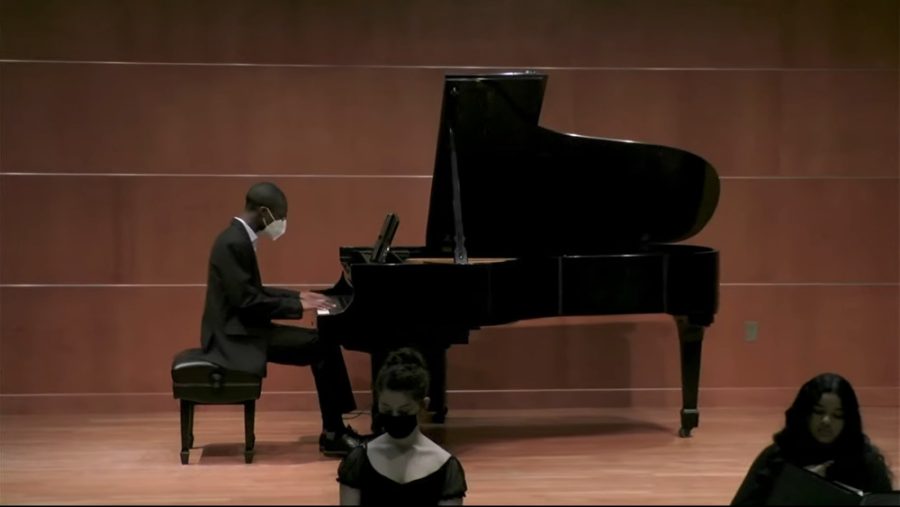MTD Department closes Black History Month with student concert
Feb 28, 2022
Black History Month is a time to celebrate, appreciate and acknowledge the rich history and achievements of African-Americans. Grand Valley State University’s Music, Theater and Dance Department closed out this month-long celebration with a live-streamed concert that was broadcasted on Feb. 25.
The show featured GVSU voice and piano students performing 12 pieces from renowned African-American composer Samuel Coleridge-Taylor’s “24 Negro Melodies, op. 59.” Organized by GVSU professors Dr. Sookyung Cho and Dr. Kathryn Stieler, the event celebrated Coleridge-Taylor’s music which features an interesting blend of sounds from South African and African-American culture. Stieler was excited about the music and thought it proposed something new for her and her voice students to learn.
“This event has given me and my students an opportunity to see how folk songs – songs that reflect both South African and African American culture – have been passed down through a singing tradition and expertly arranged for piano by a composer who, in spite of not growing up in either culture, effectively captured the essence of the cultures musically,” said Stieler.
An opportunity to learn also appealed to Lindsey O’Donnell, a GVSU student who performed at the concert.
“These particular works of Coleridge-Taylor are based on spirituals,” O’Donnell said. “It’s our job as vocalists to sing a few lines of the spiritual that each piano piece is based on. By doing this, the audience was able to hear glimpses of those vocal melodies in the piano pieces. It’s also fun because these spirituals are generally well-known, so even people watching who had never heard of Samuel Coleridge-Taylor may have recognized some of the music being performed.”
The most important aspect of the concert was the music, as Coleridge-Taylor had a unique background that shined through in every piece he composed. O’Donnell said this element was a motivating factor.
“The music and composer are the most significant part of this recital – Samuel Coleridge-Taylor had a very interesting background and he wrote music that reflects that uniqueness,” O’Donnell said. “It’s been a fun challenge working on it over the past few weeks and it’s inspired me to look into other composers who, like Coleridge-Taylor, may be outside the realm of what we usually consider to be standard classical repertoire.”
O’Donnell said that she enjoyed the diverse group of themes that the music expressed, hoping it moved those who experienced it live.
“I love the variety of human emotion expressed through the pieces and vocal melodies,” O’Donnell said. “We get a full spectrum of feelings throughout the recital – from desperation to triumph and everything in between. I hope it was a very moving performance for both the audience and the performers.”
The concert also invited unique ways to learn and understand Coleridge-Taylor’s music. One such method traced all the way back to a student performer’s roots in Africa. Stieler said that this was an unforeseen but exciting development during the concert’s development.
“A delightful and unexpected aspect of our research came from one of our gifted music students who consulted with his family in Africa to identify several sources who could translate and give context for these African songs,” Stieler said. “The sources included someone who works in the United Nations translation service and some people in Mozambique, one of whom was a part of a tribe visited by the poet of the songs. These sources concluded that the language of these songs was a combination of 19th-century Zulu and Ronga. We were so grateful to have access to that level of expertise.”
The concert served as an inspiring and insightful look into the music of an African-American icon, one who used music to express the feelings and tell the stories of other African-Americans all over the world.























